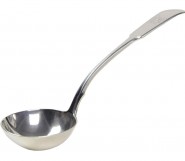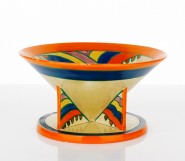Lot #72 - Important Historical Kahu Kiwi - A King's Cloak
-
Auction House:Webb's
-
Sale Name:Oceanic and African Art
-
Sale Date:26 Sep 2012 ~ 6pm (NZ time)
-
Lot #:72
-
Lot Description:Important Historical Kahu Kiwi - A King's Cloak
Muka flax fibre, kiwi feathers, kaka feathers, white feathers, sheep’s wool and pokinikini (flax strips) are included in this cloak; the prestigious combination of materials is woven into every second aho (weft). Black-and-white wool strips are on the heavily plaited top edge, with two long muka cords attached to each side with anchor tassels. The overall combination of materials suggests a prestigious lineage. This kahu kiwi belonged to Tupu Atanatiu Taingakawa Te Waharoa (c 1844/5–1929), Ngati Haua leader, Kingmaker and leader of the King movement. Recorded oral history from a direct descendant states that the kahu kiwi was in possession of Tupu at the time of his visit to England in 1914, where he presented a petition to the British Crown. In January 1922, it was gifted to his namesake and grandson Joseph Henry Tupu Gray, on the occasion of the funeral of the child’s grandmother Kauki Taingakawa, at Rukumoana Pa. Kauki Taingakawa had been instructed by her elders to marry Tupu Atanatiu Taingakawa Te Waharoa in 1894, following the death of her first husband Tawhaio. The father of Tupu Atanatiu Taingakawa Te Waharoa, Wiremu Tamihana Tarapipipi Te Waharoa (b 1805–1866) was a leading figure in the cause of Maori nationalism before the Waikato wars. Essentially a peacemaker, Wiremu devised plans for native self-government that, if adopted, would have averted war. Unfortunately, he did not live to see his aspirations transpire into peaceful progress for all tribes during the initial period of Pakeha colonialisation. Wiremu’s motto for his peaceful campaign was “the Queen for Pakeha, the King for Maori and God for all”; however, with an actively hostile government and warring iwi on the other side, he was left disillusioned at the end of his life. As he laying dying at Waihou in 1866, he called his two sons in. To the eldest boy Hote he posed the question: “What will you do about the Pakeha when I am dead? Is it peace or war with you?” Young Hote passionately replied, “I shall continue to make war”. To the younger lad Tupu: “How will your path lie? Will you fight against the Queen?” “I am for peace,” Tupu replied. “You have made peace and I shall not tread upon it.” “That is well,” said the Kingmaker. “You shall be head of the tribe, to follow after me.” Although Hote was the eldest son and continued to be regarded as a chief by his own people, from 1867 Tupu took on a natural leadership role and was considered his father’s heir. He gravitated toward diplomacy and was actively involved with attempting to broker peace between the government and Te Kooti. Throughout this period, he was an important supporter of the King movement which promoted a policy of self-determination and isolation from Pakeha. With this, he greatly aided Tawhiao in his efforts to maintain authority, and to petition the British government with inquiries into land confiscation, Maori self-determination and breaches of the Treaty of Waitangi. With the death of Tawhiao in August 1894, Tupu anointed Tawhiao’s first son Mahuta, the third King. During this period, Tupu organised the affairs of the kingdom through Te Paki o Matariki. He also established Tekau-ma-rua (the Twelve), an executive team intended to free up Tawhiao from the sole burden of carrying out the King movement programme. In the following years, Tupu established various portfolios, magistrates and other elements of authority for the King movement. He also lifted Tawhiao’s prohibition on Pakeha schools, believing that the next generation had to be educated in Pakeha ways. In 1894, he met with Premier Seddon and requested greater self-governance. When refused, he continued to develop the kingdom unilaterally, assuming powers to charge taxes and impose fines. From 1893, Europeans were warned that they too would have to obey the laws of the King movement. By this stage, the King movement had effectively been split into two groups, with Tupu leading a less-compromising vision of a united yet independent future for Maori. Throughout the first three decades of the 20th century, Tupu relentlessly pursued the full King movement programme learnt in the 1860s from Tawhiao. Appealing to the monarch, Tupu generated a petition on the violation of land rights guaranteed by the Treaty of Waitangi, which was ignored by government and not forwarded to the monarch as demanded by Tupu. However, Tupu and his followers continued to collect signatures and, by the 1910 Runanganui (grand assembly), 29,646 people had signed Tupu’s petition. It was here that Tupu was confirmed as Tumuaki of the Maori Kingdom. By 1914, Tupu was developing the Rukumoana Pa and proceeding with his plans to take his petition to England. In May of that year, Te Rata, Tupu, Mita Karaka, and Hori T Paroa arrived in London and were received by King George and Queen Mary. No redress for grievances was forthcoming. Upon his return to New Zealand, Tupu was immediately engaged with the issue of Maori military service. He sta
L.1300mm, H.940mm. -
Estimate:NZ$40,000 - 60,000
-
Realised Price:
-
Category:Tribal
This Sale has been held and this item is no longer available. Details are provided for information purposes only.










